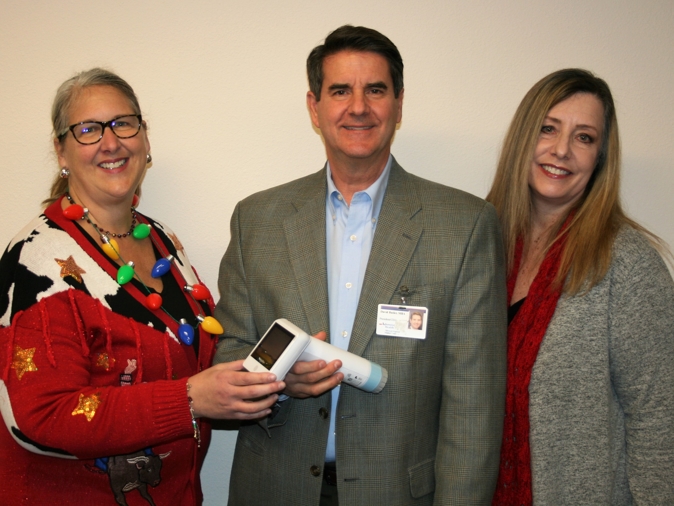Understanding and Preventing the Widow-Maker Heart Attack
Oct 1, 2024

This coronary event can have dangerous outcomes if it’s not treated quickly.
Any heart attack is life-threatening, but the so-called widow-maker heart attack is among the deadliest types. Learn why the widow-maker heart attack is so dangerous, how it’s treated and what you can do to reduce your heart attack risk.
What Is a Widow-Maker Heart Attack?
Your heart is like a machine, delivering oxygen-rich blood that powers your limbs and organs. Over time, cholesterol can build up in the heart’s arteries, then harden and become plaque. As the buildup grows, the artery becomes narrower, making it harder for the heart to pump blood. Plaque can break off, forming a clot that completely blocks blood from traveling to and from the heart muscle, causing tissue to die. This is called a heart attack.
Read More: What’s the Difference Between a Heart Attack and a Stroke?
Symptoms of a widow-maker heart attack are the same as typical heart attack symptoms: discomfort, pressure, tightness or pain in the chest, neck, jaw, shoulders, arms or back; shortness of breath; weakness; and lightheadedness.
If you are experiencing heart attack symptoms, call 911 and ask to be transported to the nearest emergency room.
What makes a widow-maker heart attack so dangerous is where it happens: a portion of the heart called the left anterior descending artery. Known as the widow-maker artery, a LAD blockage can be deadly.
The LAD artery branches off the left main coronary artery, which circulates oxygenated blood throughout the heart and body. The LAD is the largest coronary artery, responsible for
How Is a Heart Attack Treated?
Most heart damage happens within the first two hours of an attack, so treatment must be administered quickly. The sooner you go to the hospital, the better your outcome may be. Depending on the circumstances, interventional cardiologists — doctors who treat heart attacks — may use any of the following treatments for a widow-maker heart attack:
- Angioplasty: Using a long, thin tube called a catheter, a skilled surgeon accesses the target artery through a tiny incision and guides a small balloon to the blockage. The balloon is inflated to press the plaque against the walls of the artery and allow blood to flow through again. This procedure is often combined with stenting.
- Stent: A surgeon guides a catheter through a small incision to place a mesh coil in the artery where the blockage was. The coil expands to keep the artery open.
- Coronary artery bypass graft surgery: This procedure is used to detour around the blockage rather than reopen the artery. A surgeon takes a section of healthy blood vessel from another part of the body and attaches it to the artery on either side of the blockage, redirecting blood flow around it.
Coronary artery bypass graft surgery has traditionally been an open surgery, meaning a physician makes a large incision in the chest and cuts through the sternum to expose the heart. Advancements in surgical technology, however, have improved this procedure. Now, surgeons can often operate through small incisions using a surgical robotic arm.
Can Men and Women Have a Widow-Maker Heart Attack?
Though the name implies that this coronary event is most common in men, leaving their wives behind as widows, the widow-maker heart attack can affect women, too.
How Women’s Heart Attack Symptoms Differ
Chest pain is a sign you may be having a heart attack. However, women often experience
- Back or jaw pain
- Nausea and vomiting
- Shortness of breath
If you experience these or other heart attack symptoms, call 911 immediately.
What Are the Risks for Heart Attack?
Certain factors can affect both men’s and women’s heart risk, including:
- High blood pressure
- Elevated cholesterol levels
- Diabetes
- Exposure to tobacco smoke
- Obesity
- Being sedentary
Women should be aware of
- Menopause: Estrogen levels drop after menopause. This increases the risk of developing heart disease, a major contributor to heart attacks.
- Pregnancy complications: If a woman had gestational diabetes, preeclampsia or high blood pressure during pregnancy, she may be more likely to have long-term complications, including heart disease.
Read More: What Women Need to Know About Cardiovascular Risk
How Can a Widow-Maker Heart Attack Be Prevented?
Though there is some hereditary risk — for example, your risk of heart attack is higher if your parents had cardiovascular disease — many risk factors for cardiovascular disease and heart attack, including the widow-maker heart attack, can be reduced with healthy lifestyle choices.
Don’t smoke or vape, manage your cholesterol levels and blood pressure, and keep diabetes in check. Staying active can keep your heart healthy and reduce your likelihood of being overweight or obese, so aim for 30 minutes of moderate exercise five days a week.
Negative responses to stress can contribute to heart attacks, so try some coping skills for stress and anxiety. And get at least seven hours of sleep at night — it’s good for your overall health and your cardiovascular system, too.
Talk to your primary care provider or cardiologist for more guidance on how to reduce your heart attack risk.


